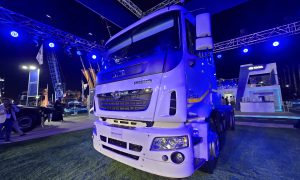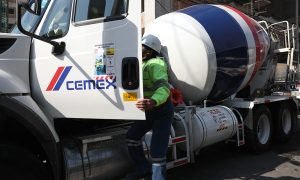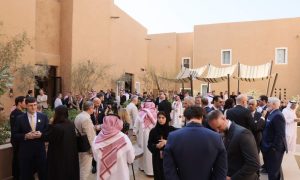Will tower cranes rise again?
With a head for extreme heights and rigorous manufacturing standards, the tower crane sector is a key component of the industry, Stian Overdahl discovers at the ITC conference


Tower crane manufacturers are now looking to the developing markets in the Middle East, South America and Asia as areas where they can expect sales growth in the coming years
The International Tower Cranes conference, held last month in Berlin and organised by KHL Group, was a chance for manufacturers to share their company’s latest developments and focus on key technologies. Key speakers included representatives from Liebherr, Wolffkran, Terex, Potain, Zoomlion, and Nabil Al Zahlawi, managing partner of NFT Cranes, who gave a ‘warts and all’ account of the crane rental business in the Middle East.
With construction industry growth in the development markets relatively flat (North America, Japan) or continuing to shrink (Europe), tower crane manufacturers are now looking to the developing markets in the Middle East, South America and Asia as areas where they can expect sales growth in the coming years.
While the sales outlook for the region is steady, the GCC markets also provide more than their fair share of complicated projects, whether super tall towers or sites with large foot prints and many cranes. Manufacturer advice during the construction design phase can be a key contributor to site efficiency, and can – paradoxically – result in solutions requiring fewer cranes.
All the major manufacturers are typically able to offer design advice during the purchasing phase, but being able to offer greater support and focus to its customers was one of the reason’s behind Liebherr’s reorganisation of its tower crane division, which began one year ago, a division previously had also included concrete machinery.
Thorstein Hesselbein, head of tower crane solutions at Liebherr-Werk Biberach, said that the restructured division offered customers improved access to crane experts, allowing them to get an economical solution for application of a tower crane. Experts are able to offer solutions employing more than just the serial cranes in production, with the option to use special and custom cranes in combination with serial cranes, as well as providing a comprehensive survey of the capabilities of a customer’s current fleet, he said.
Liebherr has calculated that in about 5% of all projects a crane with special modifications is needed, in addition to the serial production units. Examples of projects in the Middle East where Liebherr had provided a significant advantage to customers included the Marina Mall in Dubai, where the company provided a revised tower crane site plan to the contractor that reduced the number of required cranes from nine to eight; and the construction of the Royal Clock Tower in Makkah, the second tallest building in the world, where Liebherr cranes were used to lift the façade and other elements. The special challenge for the project was to mount the clock work using the tower cranes, requiring the use of Liebherr’s Micromove fine positioning mode.
Liebherr is currently seeing a lot of interest in its tower crane range from the GCC markets, said Dominique Tasch, managing director of Liebherr-Werk Biberach, with cranes on major projects in Dubai, Riyadh, and the National Museum in Qatar, to mention a few.
“We see the GCC markets as quite stable markets, with more investment to come, so in that sense not an emerging market, a mature market, but still growing.”
The company is also looking to increase its permanent service capabilities in Saudi Arabia, which is currently boosted by service technicians regularly sent from Germany, which has a high cost for the company.
The Berlin conference was a chance for manufacturers to talk to major tower crane customers, and one topic discussed in depth, by Wolffkran owner and CEO Peter Schiefer, was tower crane financing. A man wearing many hats, Schiefer was speaking as manufacturer, in his role as president of the Committee for European Construction Equipment (CECE)’s tower crane division, and as the operator of one of the largest tower crane rental fleets in Europe. He also has ample experience in the finance industry, having worked as a merchant banker and in private equity, before purchasing Wolffkran with the partner of his capital management firm in 2005.
Financing the purchase of a tower crane can be a difficult process, since the financing company does not have a solid asset, but rather they are financing multiple sections of mast, jib, hoists and rope, which over their working life can be reassembled in many different cranes.
Compared with a mobile crane, which has a road licence and is a single unit, this presents problems for banks and financiers, said Schiefer. The situation has not been helped by a few unscrupulous companies, prior to the financial downturn, who borrowed money on tower cranes, and then when the company folded, it was found that the cranes had been sold.
Schiefer said it was important to stress that new banking regulations, Basel III, will make the situation even worse, because there are higher asset requirements for lenders. While a tower crane typically has a working life from ten to 25 years, most owners will aim to pay it off over the first five to ten years of its life.
But securing financing for terms this long is a problem, said Schiefer, and fleet owners may be forced to resort to ‘balloon financing’, where the crane is financed for four years, and then refinanced when this term ends. Balloon financing is a problem because interest rates can rise significantly during the period of the initial loan, meaning that when it’s time to refinance the interest costs will be a lot higher – in short it injects a signficant element of risk into the balance sheets.
In light of the new banking regulations, Schiefer said that fleet owners should look at taking a number of steps in order to receive longer-term financing for tower cranes.
These include educating banks and lenders that tower cranes will continue to produce revenue across their entire working life, which is normally at least 15 years; implementing a robust inventory management system so that banks can be confident that the items they’re lending on are easily trackable; discussing the impact of proper maintenance of equipment on working life and residual value; and highlighting to lenders that tower cranes are almost never the target of theft, since stealing a tower crane is highly impractical.
Efforts from Wolffkran on its rental fleet in Europe have included ‘barcode inventorising for the major items in the rental fleet. In total, noted Schiefer, they have more than 20,000 individual components in their fleet.
Rental companies are a major feature of the crane industry, and Dubai-based NFT Cranes is now one of the largest (if not the largest) tower crane rental company in the world, as well as the sales agent for Potain. At the height of the Dubai boom, the company had 1,000 cranes in its fleet, though this number dropped to 500, with cranes moved to other markets where NFT operates outside of the Middle East, while in 2014 the company expects to have 700 cranes operating in the region.
Managing partner Nabil Al Zahlawi had been asked to speak about its operations in the Middle East, and provided a ‘warts and all’ profile of the region, itemizing a significant number of challenges for rental companies.
Among these is the huge investment, due to the significant amounts of stock that the company must hold in reserve. A significant amount of the fleet is currently on the ground, awaiting projects, he said – a measure taken since phone calls can come at any time, with cranes wanted in short order, sometimes as soon as the next day.
Worksites can also operate 24 hours a day, seven days a week, meaning that there is much more wear and tear on a crane, compared to a work site in Europe where it is only being used five-six days per week, and only for no more than 8-12 hours. Longer working hours also means shorter rental durations for the project. And operators tend to have lower skill levels, with only short training periods.
The condition of the ropes is also the responsibility of rental companies. And if there is a break-down, the renter will deduct the down-time from the rental price.
The environmental conditions in the Middle East further accelerate a crane’s rate of aging. Even when it is not being used, and is lying in the yard, the high humidity ages the machine.
“For manufacturers, the Middle East is a good place for testing your equipment”, Al Zahlawi noted. For these reasons, after 15 years a tower crane should be scrapped, he believes, a figure at odds with some manufacturers, who believe their cranes are okay to operate to at least 25 years. New regulations that are coming will also place age limits on cranes, he said, with cranes older than 15 years unable to be used on work sites.
Another issue for rental companies in the region is ownership – when a crane is on a site, it is hard for a rental company to prove ownership, and the principle is that ‘who has the crane, owns it’.
Further problems specific to the Middle East include border tariffs, such as when a unit is taken from the UAE to Saudi Arabia, and from UAE to Qatar. There can also be problems getting cranes out of Qatar, since the country is eager to categorise old tower cranes as scrap metal, due to shortages of scrap metal in the country.
While overall levels of business are still tepid, Al Zahlawi believes that a number of mega-projects in Saudi Arabia, UAE and Qatar are on the horizon. 50% of business in 2015 will come from Saudi Arabia, 20% from UAE, 20% from Qatar, and 10% from the rest of the Middle East. He also estimated that if Dubai is successful in its 2020 World Expo bid, that he will receive an immediate order for a number of tower cranes as projects are jump-started. Providing a break-down of his fleet by model type, Al Zahlawi said he expects that luffing cranes will become more popular in the coming years.



















